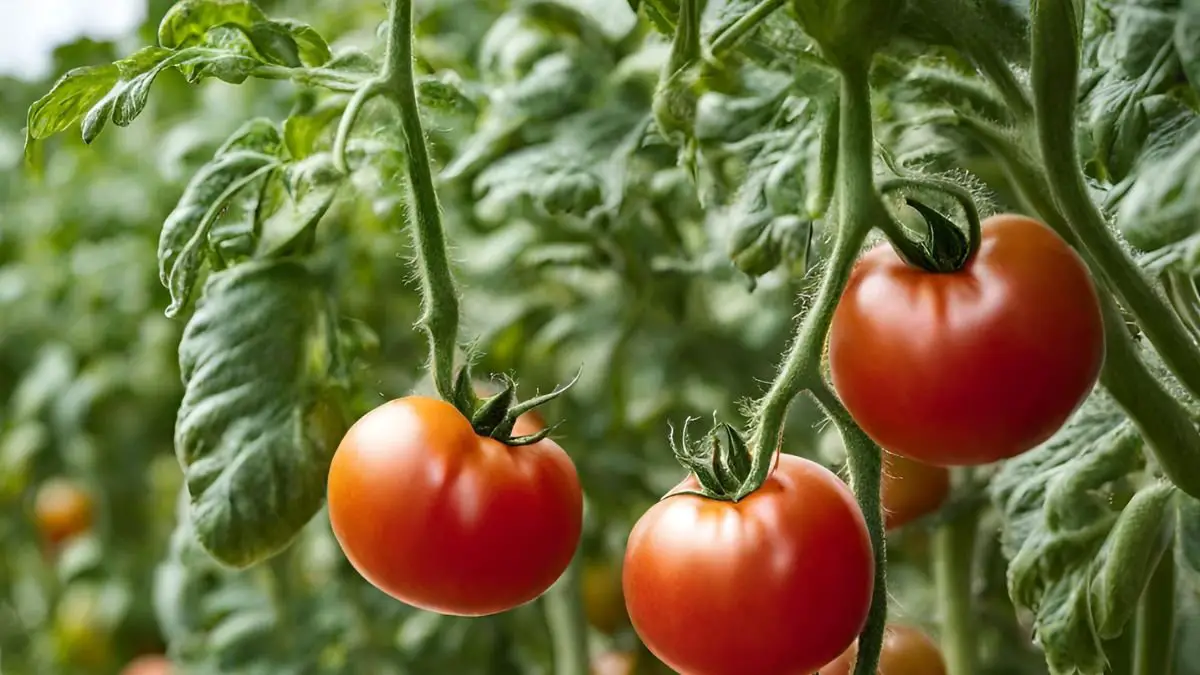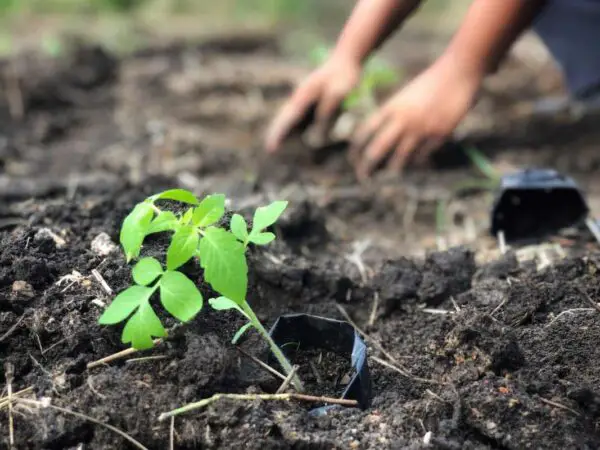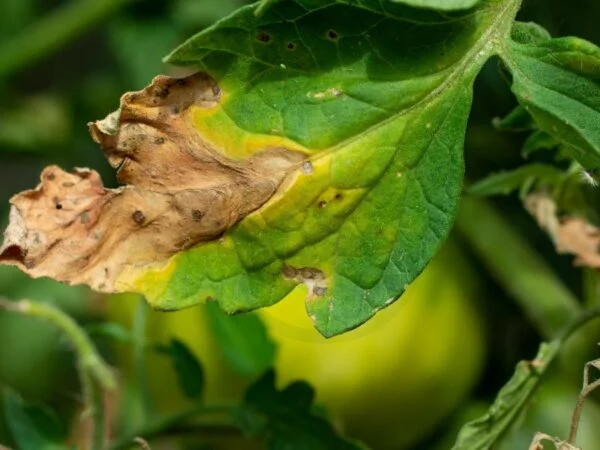Experiencing edema in tomato plants? Don't worry, I'm here to help you research, understand, and address the surface problem effectively.
Edema in tomato plants, also known as oedema, occurs when the plant cells on the leaf surface absorb water faster than they can release it, leading to the formation of blisters or bumps on the leaves. This condition, known as oedema, is commonly seen in tomatoes grown indoors or in high humidity environments, and it is caused by an imbalance of cells in the leaf. It's often caused by a disparity between water uptake and transpiration, particularly when the roots absorb water faster than the plant can utilize it. To prevent edema, ensure proper watering practices, avoid over-fertilization, and maintain adequate ventilation to reduce humidity levels around the plants.
Looking to delve deeper into managing tomato plant health? Explore techniques such as adjusting watering schedules, optimizing nutrient levels, and implementing appropriate environmental controls to foster optimal growth and resilience against conditions like edema.
Key Takeaways
- Identify Edema Signs: Learn to recognize the signs of edema in tomato plants, such as blister-like bumps on leaves.
- Address Causes: Understand the various causes of edema, including rapid water uptake and high humidity levels.
- Implement High Tunnel Solutions: Combat edema challenges in high tunnel environments by regulating humidity and airflow.
- Adopt Preventive Measures: Take proactive steps like proper watering and ventilation to prevent edema in tomato plants.
- Explore Advanced Management: Consider advanced solutions like adjusting nutrient levels to manage edema effectively.
- Apply Lessons from Case Studies: Gain insights from real-life examples to improve edema management practices.
Edema Basics
Symptoms Identification
Identify edema in tomato plants by observing blisters or callus-like growths along veins. Look for unusual curling, distortions, and yellow spots on the upper side of leaves. Notice brittle leaves with significant blistering that crack easily.
Understanding Causes
Edema is primarily caused by high humidity and low light conditions. Overwatering and poor light quality also contribute to edema development. Environmental factors like cloudy cool weather can increase the likelihood of edema.
High Tunnel Focus
- Utilize high tunnels to enhance air circulation and reduce edema risk.
- Roll up the sides of high tunnels for better transpiration and decreased water imbalance.
- Maintain proper ventilation within high tunnels to prevent edema.
Recognizing Edema Signs
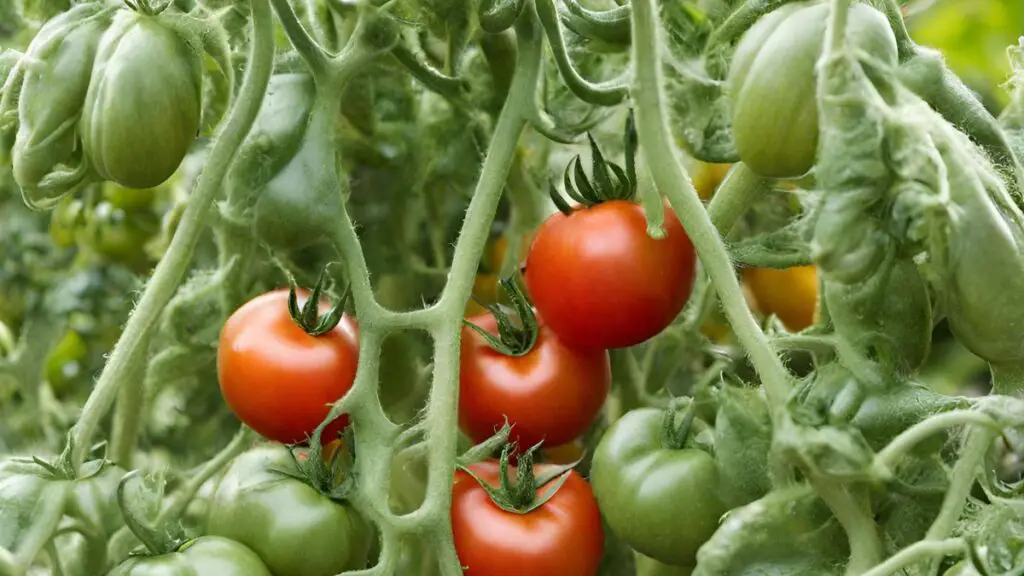
Leaf Blisters
Leaf blisters in tomato plants signal overwatering. Adjust watering to prevent blister formation and monitor leaves closely for early signs. Proper moisture management is crucial to avoid blisters.
Stem Swellings
Stem swellings indicate edema. Prevent excessive water buildup by adjusting soil conditions. Adequate ventilation helps reduce the risk of stem swellings in tomato plants.
Fruit Symptoms
Cracking in fruits is a common sign of edema. Manage soil health to prevent fruit deformities related to edema occurrences. Climate-smart practices can help reduce fruit symptoms linked to edema.
Causes of Edema
Water Imbalance
Address water imbalance by adjusting watering frequency. Monitor soil moisture levels regularly to prevent issues. Implement innovative watering systems for balance.
Environmental Triggers
Identify high humidity and low light as environmental triggers of edema. Control factors to minimize impacts on plants. Implement climate control measures for prevention.
Soil Conditions
Optimize soil conditions to prevent excess water retention. Improve soil health and drainage for proper moisture levels maintenance.
High Tunnel Challenges
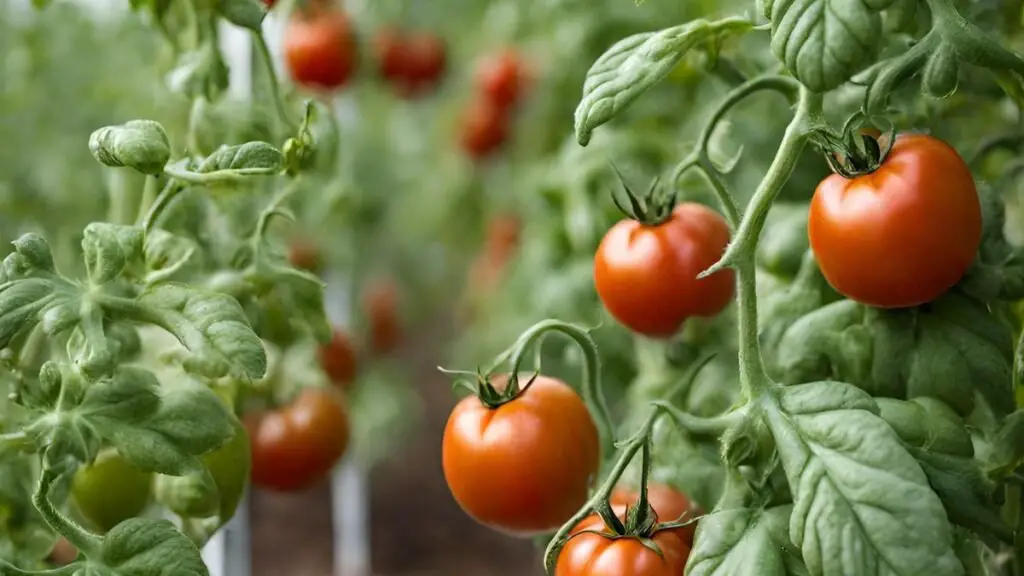
Unique Conditions
When managing edema in tomato plants, it's crucial to consider unique conditions like extreme temperatures. Adapt watering techniques based on specific environmental factors to prevent edema. Implement interventions tailored to the unique circumstances of your high tunnel to avoid edema development.
Ventilation Issues
Improve airflow around tomato plants to address ventilation issues and reduce humidity levels. Install fans or other ventilation systems in your high tunnel for better air circulation. Proper ventilation is essential to prevent the onset of edema in tomato plants.
Moisture Management
Adjust watering practices to manage moisture levels effectively in your high tunnel. Implement strategies such as mulching to maintain optimal soil moisture content for tomato plants. Regularly monitor moisture levels to ensure that edema does not occur due to excessive water retention.
Solutions for Management
Watering Techniques
Optimize watering to prevent overwatering, use drip irrigation for precise control, and adjust frequency based on plant needs.
Climate Control
Provide adequate light and temperature levels, implement shading techniques to prevent heat stress, and monitor conditions for edema-related issues.
Soil Health Improvement
Enhance drainage by adding organic matter, test soil pH levels, adjust for optimal growth, and improve soil structure with cover cropping.
Preventive Measures
Plant Spacing
Plant tomato plants farther apart to improve air circulation. Overcrowding can increase humidity, leading to edema. Optimizing spacing helps maintain a healthy water balance, reducing the risk of edema.
Adequate Ventilation
Ensure proper ventilation to prevent humidity accumulation around tomato plants. Installing vents or fans enhances air circulation, lowering the chances of edema. Effective ventilation systems play a crucial role in minimizing the risk of water-related issues.
Regular Monitoring
Regularly check tomato plants for early signs of edema. Monitoring soil moisture levels is essential to prevent water imbalance and subsequent edema development. Conducting frequent inspections allows for prompt detection and management of any symptoms related to edema.
Advanced Solutions
Innovative Watering Systems
Implement innovative watering systems like self-watering containers. These containers provide a consistent water supply to tomato plants, reducing the risk of edema buildup. Utilize moisture sensors that detect soil moisture levels and automatically water the plants when needed. Consider exploring hydroponic systems for precise water management, ensuring optimal hydration without the risk of overwatering.
Climate Smart Practices
Adopt climate-smart practices to mitigate risks of edema in tomato plants. Implement mulching techniques to regulate soil temperature and moisture levels, preventing excessive water absorption. By using mulch, you can create a protective barrier that maintains an ideal growing environment for tomatoes. Consider rainwater harvesting as an eco-friendly approach to reduce reliance on traditional watering methods. This practice not only conserves water but also ensures that your plants receive pure and natural hydration.
Resistant Varieties
When selecting tomato plant varieties, prioritize those known for their resistance to edema. Choose cultivars that have demonstrated resilience against environmental triggers that may lead to edema development. Opt for disease-resistant varieties as they are less prone to issues related to edema, safeguarding your plants' health and productivity. By opting for resistant varieties, you can significantly reduce the likelihood of encountering edema-related challenges in your tomato garden.
Case Studies
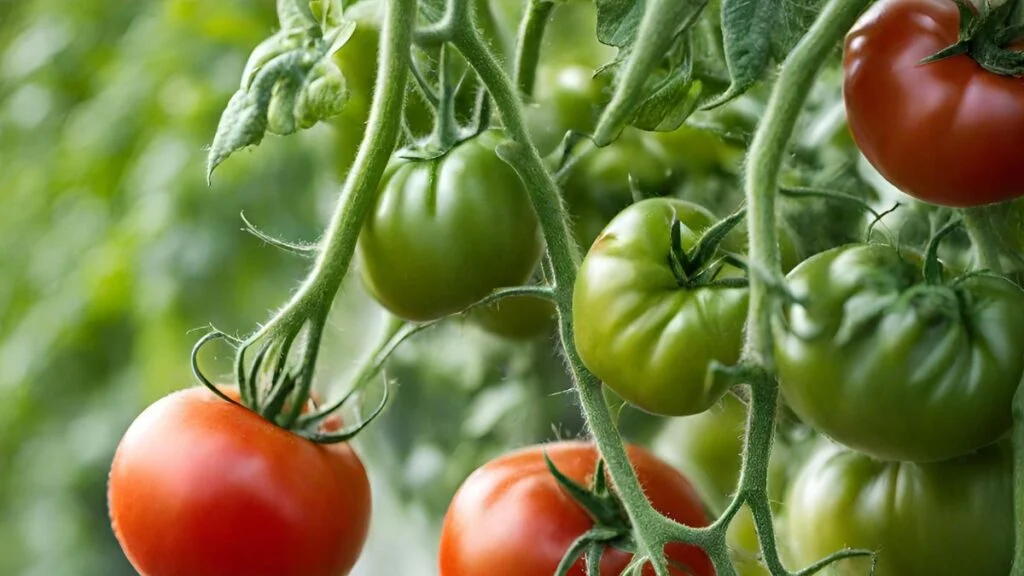
Successful Interventions
Successful interventions in preventing edema in tomato plants have shown promising results. For instance, implementing proper watering techniques, such as deep and infrequent watering, significantly reduces the risk of edema development. Using well-draining soil can enhance root health and minimize water retention issues.
In a notable case study, a commercial tomato farm successfully combated edema by incorporating mulching practices. Mulching helped regulate soil temperature and moisture levels, creating an optimal environment for plant growth. This simple yet effective strategy played a crucial role in preventing edema formation on the tomato plants.
Key strategies like ensuring adequate air circulation around the plants and maintaining consistent humidity levels have proven to be essential in managing edema effectively. By monitoring environmental conditions closely and promptly addressing any signs of stress or imbalance, growers can proactively prevent edema outbreaks.
Learning from Failures
Learning from past failures is vital in improving edema management practices for tomato plants. One common mistake is overwatering, which leads to waterlogged soil and increases the likelihood of edema occurrence. By understanding the negative impact of excessive watering, growers can adjust their irrigation schedules accordingly.
Analyzing failed attempts to control edema reveals the importance of proper ventilation within greenhouse settings. Inadequate airflow can create a humid environment conducive to edema development. Growers must prioritize optimizing ventilation systems to maintain ideal growing conditions and prevent plant diseases.
The consequences of neglecting edema prevention measures can be severe, resulting in stunted growth, reduced fruit quality, and overall yield loss. By recognizing the repercussions of inadequate care early on, growers can take proactive steps to address potential risks and safeguard their tomato crops against edema-related issues.
FAQs Compilation
Common Questions
How can you identify edema in tomato plants?
- Edema in tomato plants appears as small blisters or bumps on the leaves' undersides.
- These blisters can later turn into corky scars, affecting the plant's overall health.
What are the causes of edema in tomato plants?
- Edema is commonly caused by excessive watering, leading to an imbalance in water absorption.
- Factors like high humidity levels and fluctuating temperatures can also contribute to edema development.
How can you manage edema in tomato plants effectively?
- To manage edema, ensure proper drainage for excess water to prevent waterlogged soil.
- Adjust watering schedules to maintain consistent moisture levels, avoiding sudden fluctuations.
Expert Answers
How can one prevent and manage edema in tomato plants effectively?
- Experts recommend using a well-draining soil mix to prevent water accumulation around the roots.
- Implementing a consistent watering schedule and ensuring proper air circulation can help manage edema.
Where can one seek tailored solutions for edema issues in tomato plants?
- Consulting with local agricultural extension services or certified horticulturists can provide customized solutions.
- Professionals can offer insights into specific nutrient deficiencies or environmental factors contributing to edema.
What are the best practices for preventing and treating edema in tomato plants?
- Adopting practices like mulching to regulate soil temperature and moisture levels can aid in preventing edema.
- Regularly inspecting plants for early signs of edema and promptly addressing any issues is crucial for effective treatment.
Summary
Understanding edema in tomato plants is crucial for successful cultivation. By recognizing the signs, understanding the causes, and implementing effective management strategies, you can overcome challenges associated with this condition. High tunnel environments present unique obstacles, but with preventive measures and advanced solutions, you can ensure the health and productivity of your tomato plants. Real-life case studies and FAQs compilation offer valuable insights and practical tips for dealing with edema effectively.
Take action now to apply these proven strategies in your tomato plant care routine. Share your newfound knowledge with other growers to foster a community of informed and successful cultivators. With the right approach, edema doesn't have to hinder your gardening efforts - empower yourself with the tools and information needed to thrive in tomato plant cultivation.
Frequently Asked Questions
What are the common signs of edema in tomato plants?
Edema in tomato plants is characterized by blister-like bumps on leaves, often turning brown or corky. These bumps are caused by excessive water uptake, leading to cell damage. Watch out for these distinct symptoms to identify edema early.
How can I prevent edema in my tomato plants?
To prevent edema, ensure proper watering practices by maintaining consistent soil moisture levels. Avoid overwatering or sudden changes in watering routines. Provide adequate drainage and ventilation to reduce humidity levels around the plants.
Are there natural solutions for managing edema in tomato plants?
Yes, you can manage edema naturally by using organic fungicides or applying neem oil to control fungal infections that exacerbate edema symptoms. Promoting good air circulation and avoiding overcrowding of plants can help prevent and manage edema effectively.
When should I be concerned about edema affecting my tomato plants?
You should be concerned about edema when you notice widespread blistering on multiple leaves, as this indicates a more severe issue. Monitor the progression of symptoms closely and take action promptly to prevent further damage to your tomato plants.
Can environmental factors contribute to the development of edema in tomato plants?
Yes, environmental factors such as high humidity levels, temperature fluctuations, and poor air circulation can contribute to the development of edema in tomato plants. Addressing these factors through proper ventilation and temperature control can help mitigate the risk of edema occurrence.
Image Source: Paid image from CANVA

